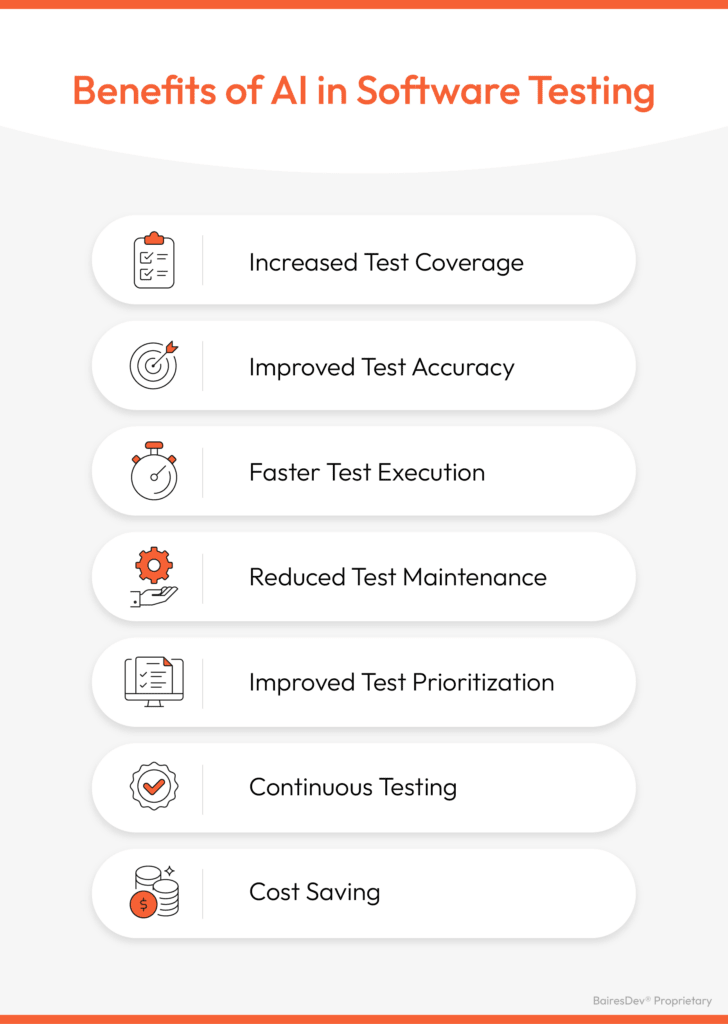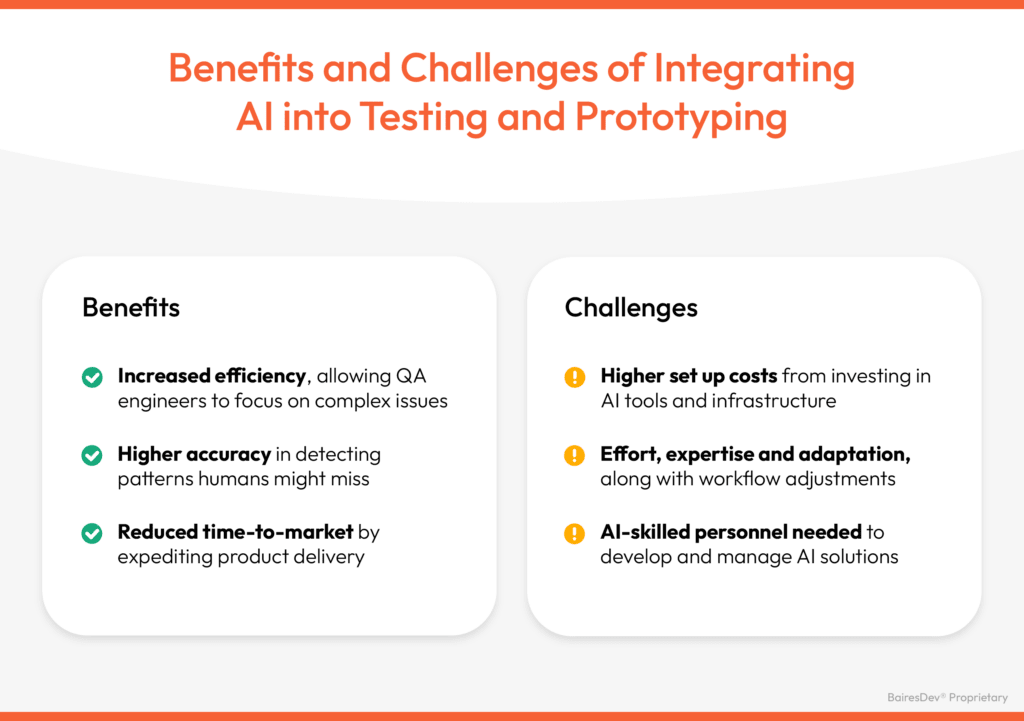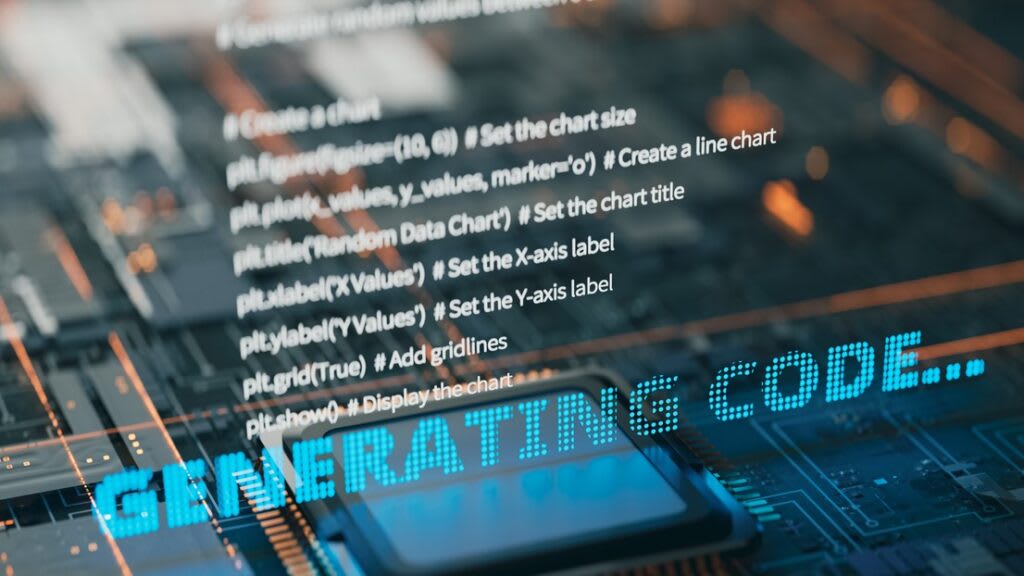Artificial Intelligence (AI) stands as a transformative tool redefining innovation, quality, and efficiency. From research to refinement, AI plays a crucial role at every stage of the product life cycle. It not only acts as an efficient “automator” of tasks but also as a collaborator, driving creativity and innovation throughout the process.
Leading companies, known as Digital Champions, are already utilizing AI and Machine Learning (ML) to enhance efficiency and accelerate development timelines, generating more than 30% of their revenues from fully digital products or services.
The importance of AI in product ideation cannot be overstated. Advanced AI tools help analyze data from various sources, such as social media and customer reviews, to identify market trends and consumer preferences, facilitating the creation of products that meet market demands.
This article examines how AI-driven innovations impact the product development lifecycle. We’ll cover testing, development, and launch stages, highlighting how these technologies can lead to a more efficient and innovative future.
Product Testing
The demand for rapid innovation and high-quality products has never been higher. This has driven companies to explore AI and ML to enhance their product testing and quality assurance processes for more efficient and accurate testing outcomes.
For instance, AI significantly expands and improves automated test coverage by utilizing ML algorithms to analyze vast amounts of data and identify patterns. Traditional testing methods often struggle to cover all possible scenarios and edge cases due to their manual and time-consuming nature. AI can also identify bugs by analyzing the requirement gaps or missing requirements.
AI-driven tools like Test.ai and Applitools can automate these processes, ensuring a more comprehensive examination of software products. Test.ai, for instance, uses machine learning to automate mobile app testing by mimicking human interactions and identifying UI inconsistencies.
Applitools, on the other hand, specializes in automated visual testing, detecting visual defects across different screen resolutions and devices. These tools not only enhance the depth and breadth of test coverage but also ensure that products meet high-quality standards before reaching the market.

A/B Testing
A/B testing, a crucial aspect of product development, involves comparing two versions of a product to determine which one performs better. Traditionally, A/B testing can be labor-intensive and time-consuming. AI automates the comparison and analysis of different product versions.
AI algorithms can quickly analyze user interactions and feedback, providing insights into which version is more effective. Additionally, AI lets marketers test a ton of ideas at once and across the whole funnel, not just one at a time. It tweaks experiments in real-time, dropping poor ideas and adding new ones without needing to restart. Plus, AI speeds up scalability by quickly creating new variants and handling everything from code and copy to imagery.
Additionally, AI analyzes historical data to predict and prevent potential issues, reducing bugs and ensuring a smoother user experience. This means less time and cost compared to traditional manual testing, enabling faster releases of high-quality products..
Rapid Prototyping
In tandem with A/B testing, rapid prototyping has revolutionized the way products are designed and developed, providing opportunities for faster iteration and more innovative solutions. AI-driven prototyping leverages ML algorithms and advanced data analytics to automate many of the tasks traditionally done manually.
Look at generative design algorithms. They can create a multitude of design variations, allowing designers to explore a wider array of possibilities in a fraction of the time. These AI tools can also simulate real-world conditions and user interactions, providing valuable feedback on a prototype’s functionality and usability before it ever reaches physical production.
For example, when developing an autonomous driving system, you can use reinforcement learning (DQN) to create a simulated environment with virtual cars interacting with traffic lights, pedestrians, and other vehicles. Training the DQN agents in this setup helps you test the system’s performance, spot weaknesses, and make improvements before real-world deployment.
Moreover, AI technologies extend beyond the mechanics of design to enhance the creative and strategic aspects of prototyping.

AI in Product Development: Transforming Processes and Enhancing Efficiency
Automating Tasks
AI has become a game-changer in product development. Take for example the automation of repetitive tasks. Routine development tasks can now be automated, freeing developers to focus on more complex and creative aspects of their projects.
AI’s ability to handle large volumes of data and perform repetitive actions with high accuracy makes it an invaluable tool for developers to enhance their productivity. This is not a theory. We have surveyed 500+ developers, and 72% of them report boosting their productivity with GenAI.
However, it’s crucial to recognize that not every repetitive task can or should be automated. The decision to automate must be approached strategically. Factors such as the complexity of the task, the potential impact on productivity, and the cost of implementation should be considered.
Evaluating the effectiveness of automation involves monitoring key performance indicators (KPIs) to ensure that the automated processes are indeed contributing to overall productivity and not introducing new inefficiencies.
AI Assistants in Coding and Beyond
AI-powered tools like GitHub Copilot have emerged as valuable assistants for developers. These tools offer real-time code suggestions, helping to reduce errors and improve coding efficiency.
By providing context-aware recommendations, AI assistants enable developers to write code faster and with greater accuracy. This not only accelerates the development process but also enhances the overall quality of the code.
Beyond coding, AI can assist in various stages of product development. For example, AI can analyze project requirements, offer insights, and even help in strategic decision-making.
AI tools like GitHub Copilot are revolutionizing software development by enhancing efficiency, reducing errors, and improving code quality. A study by the University of Waterloo found that Copilot is effective at avoiding basic coding errors and even producing corrected versions of flawed code in some cases. Additionally, these AI tools can be customized to align with an organization’s specific coding standards, ensuring consistency and high-quality outcomes in development projects reinforcing a shared coding culture.
Notice how we are not talking about automation, but rather cooperation. These tools at this point in time are at their best when they augment our developers with a dialogue. By augmenting human judgment, AI can provide valuable inputs that lead to more informed and effective development strategies.

Continuous and Iterative MVP Development
This development strategy emphasizes creating and launching a product with minimal features. It satisfies early users and gathers valuable feedback for future development. The MVP framework reduces the development cycle, minimizes costs and risks, and quickly validates assumptions about market needs.
During the market research phase, AI tools can analyze consumer trends. In the product development phase, ML algorithms can generate multiple prototypes based on specific parameters. During the testing phase, AI can automate the collection and analysis of user feedback, identifying patterns and areas for improvement. That is to say, that it covers what it would for typical product development.
However, be mindful of AI needs if you’re working on a small project with limited data. AI requires large amounts of it, and accessing it could be challenging. If you’re building an MVP it’s likely you may not have a budget or access to AI/ML specialists. After all, while AI tools will expedite some development stages, ask yourself if that’s the best way your MVP could be taken care of.
Lastly, you should have clear the difference between a prototype and an MVP. We refer to a prototype to explore and test different ideas, while we use the term MVP to test your product with real customers and validate your assumptions.
Product Launch
Identifying Pain Points, Opportunities, and Threats
From analyzing customer feedback to monitoring performance, AI provides actionable insights that can make the difference between a product’s success and its failure. Understanding the market landscape is crucial for any product launch. AI, particularly Natural Language Processing (NLP), can analyze vast amounts of customer feedback to identify pain points that need addressing.
Sentiment analysis platforms like Hootsuite and Lexalytics can sift through social media comments, reviews, and forums to gauge customer sentiment. This enables companies to pinpoint specific areas that require improvement or innovation.
AI doesn’t just stop at identifying pain points; it also uncovers market opportunities and potential threats.
This allows companies to tailor their products to fill these gaps, giving them a competitive edge. Additionally, AI can identify potential threats, such as shifts in consumer behavior or emerging competitors, enabling proactive measures to mitigate risks.

Performance Monitoring and Measurement
Once a product is launched, continuous monitoring is essential for its sustained success. AI-driven analytics tools like Google Analytics and Tableau can track product performance and customer satisfaction in real-time. These tools provide a comprehensive view of various analytics to make data-driven decisions swiftly. This ensures that the product remains relevant and continues to meet customer needs.
Leading companies like Amazon and Netflix have successfully harnessed the power of AI to optimize their product launches. Amazon uses AI to analyze customer feedback and performance data, enabling it to make real-time adjustments to its product offerings.
Netflix, on the other hand, employs AI algorithms to predict viewer preferences and tailor its content recommendations accordingly. These companies demonstrate how effectively leveraging AI can result in more successful product launches and sustained customer satisfaction.
Preparing for AI
While AI can revolutionize product development by boosting efficiency, innovation, and customer satisfaction, adapting workflows and training teams to leverage this technology is challenging. Integrating AI successfully requires technological expertise and a cultural shift towards continuous learning and adaptability.
Ensuring team members are well-versed in AI tools and fostering a change-friendly environment is crucial for maximizing AI’s benefits in product development.
The next article in this series will explore strategies for overcoming these challenges, offering insights into effective training programs and workflow adaptations to fully harness AI’s power.






